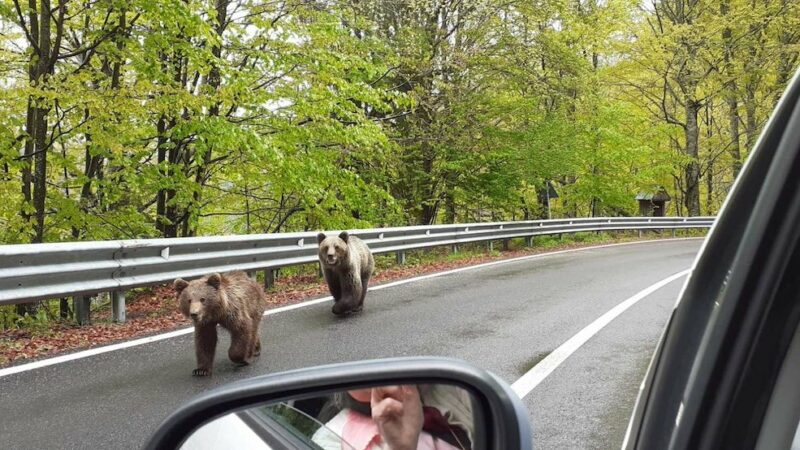4 Mountain Lion Myths to Stop Believing Right Now
Also known as cougars, pumas, panthers, and catamounts, mountain lions are fast, powerful, and mysterious predators. Massive paws, sharp teeth, and the reflexes of a cat are indeed enough to strike fear into the heart of a hiker, but like many wild creatures, from moose to bears, cougars are misunderstood.
Videos by Outdoors
Why? Probably because of how little the average outdoors person knows about these animals and how they’re portrayed in modern media, explains Mat Alldredge, a mammals researcher for Colorado Parks and Wildlife who specializes in carnivores like mountain lions. And thanks to Alldredge’s nearly 18 years of catching, tagging, and researching animals, including studying cougar-human interactions, there are plenty of misconceptions he’d like to correct about these majestic animals.
Here are just a few.
Myth #1: Mountain lions will stalk humans as prey.
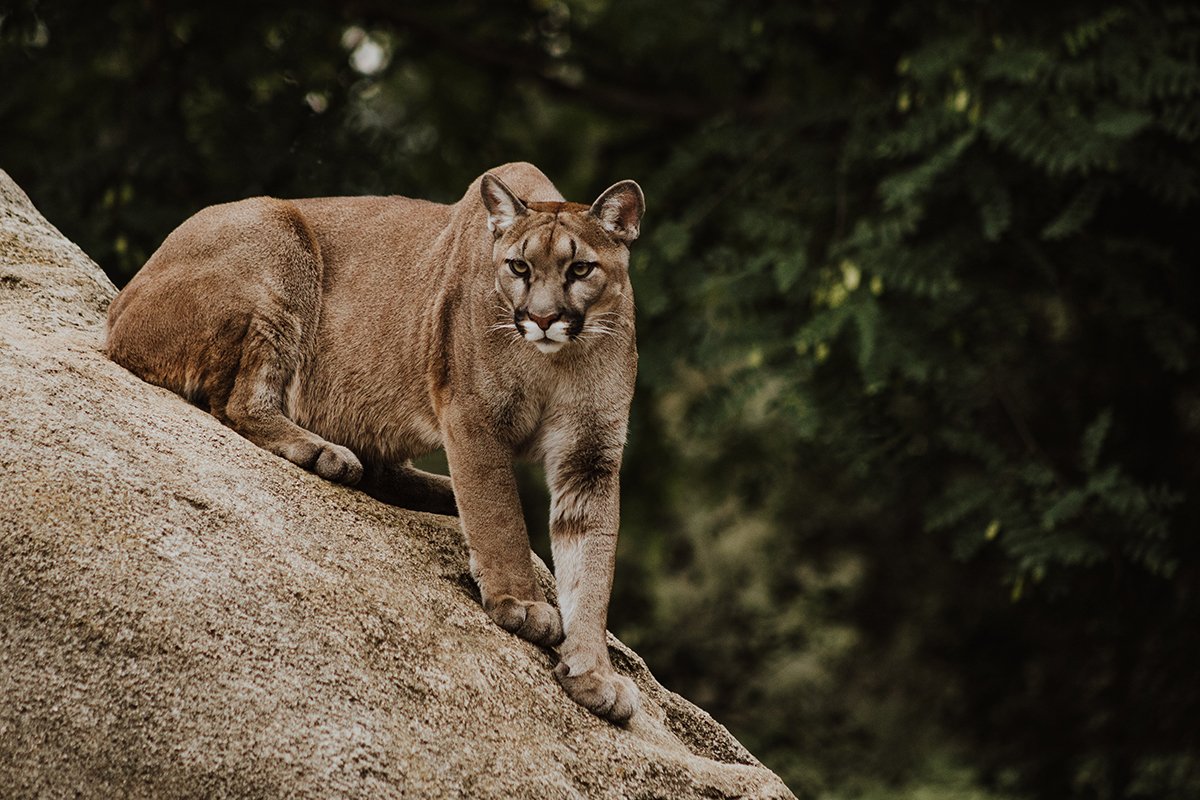
You may have heard reports or even seen videos of mountain lions following hikers down a trail, stalking them, seemingly ready to pounce for their dinner. And while that’s certainly a terrifying scenario to consider, and it’s not totally a myth (cougars may very well follow hikers), the act is most often out of curiosity, not due to predatory behavior.
“Any close encounter with a cougar is bound to be scary,” Alldredeg says. “But that’s not how mountain lions hunt.” On the contrary, if you spot a cougar following you, he says, chances are, the animal is just curious.
When a mountain lion is actually on the hunt, you won’t see it. That’s because the cougar will spot its prey from a distance, find a good hiding spot where it waits for its potential dinner—usually a deer or other fleshy animal—to walk right in front of the cat, allowing it to strike with impressive speed and achieve the element of surprise.
YOU MIGHT ALSO LIKE THESE STORIES:
• ‘Something’s Watching You:’ Video Captures Mountain Lions Stalking Hikers
• The ‘Demons’ of the Southwest: What to Do If You Encounter a Mountain Lion
• Glacier National Park vs Rocky Mountain National Park: Outdoor Writers Debate Which One You Should Visit Next
• WATCH: Grizzly and Moose Fight in Alaskan River
• As Elusive as Bigfoot? Here Are 4 of the Rarest Animals in North America
Myth #2: Mountain lions are aggressive.
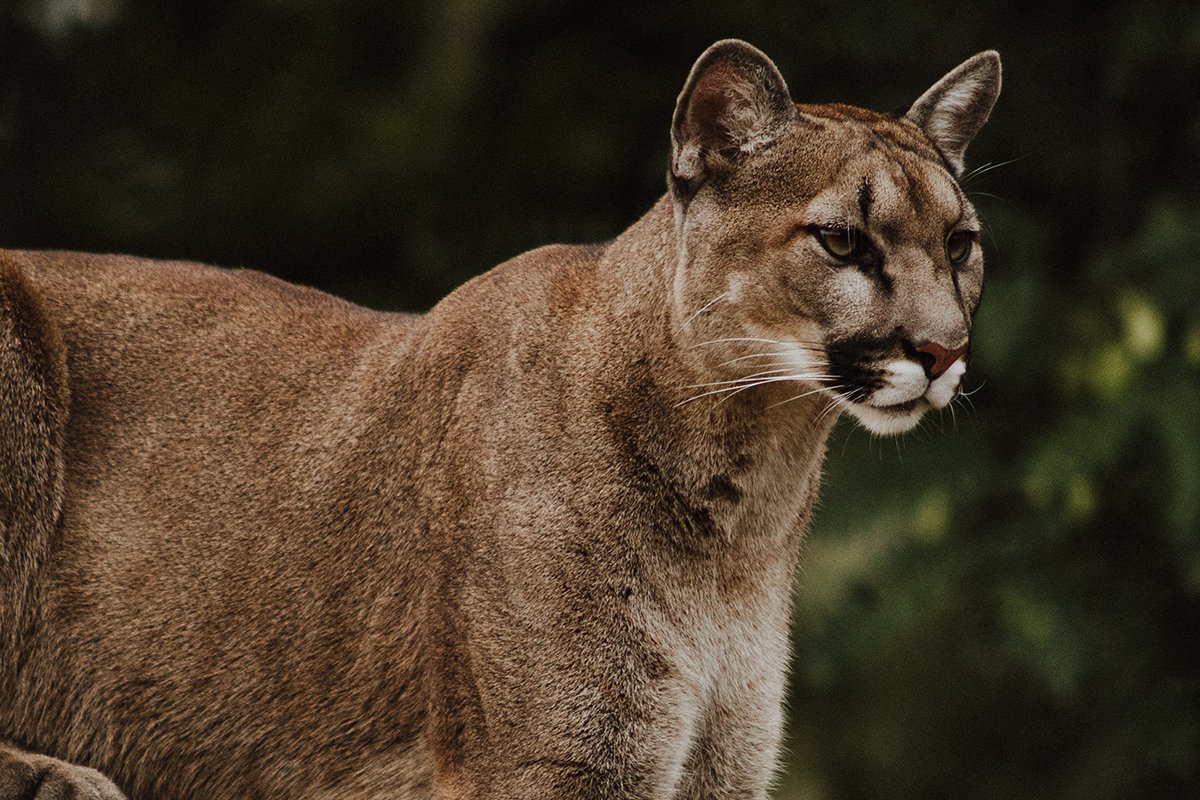
Mountain lions, much like other wild carnivores—including wolves—are often seen as aggressive animals waiting to lash out at humans who dare to wander into their territory. However, “aggressive” isn’t the right word.
Cougars can be protective, especially if they’re accompanied by kittens or are defending a recent kill that just happens to be nearby. Mountain lions kill, then cache their food, feeding off of it for days. If they feel like someone or something is threatening that hard-earned meal, they’ll protect it.
That said, as long as a mountain lion hears you coming, chances are it’s going to take off or take cover, and you’ll never know it was ever there.
“[Mountain lions] don’t want that conflict,” Alldredge says. He says based on his research and observations, you’re most in danger if you surprise a cougar or make it feel cornered with no way to escape. Never try to sneak up on a wild animal.
Myth #3: Mountain lion populations are growing dangerously large.
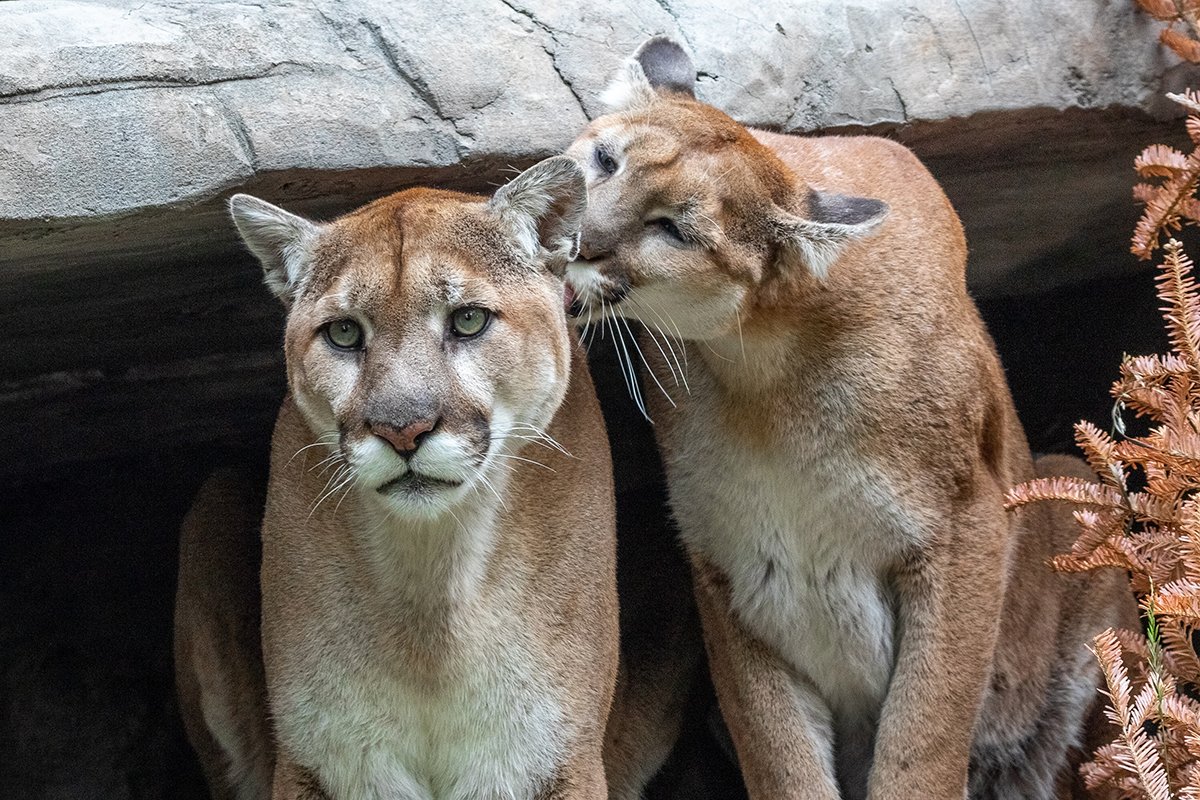
The North American cougar population is growing, and that’s a good thing, Alldredge explains. When settlers first came to North America, mountain lions lived coast to coast—from north to south and from east to west. As settlers pushed west, cougars became a threat to their livestock and, thus, their livelihood. So the majority of the cougar population east of the Rockies was effectively wiped out by humans to neutralize this threat.
Over the last five decades or so, states have begun protecting the animal and its habitat, which has led to a healthier and more wide-spread population of mountain lions in the U.S., which now extends into Nebraska and the Dakotas. These animals help bring balance and biodiversity back to regions they once roamed.
Meanwhile, urban sprawl is creeping farther into the territory of wild animals, leading to more recorded encounters on cell phones and doorbell cams, which may lead people to believe there are more mountain lions than ever, when, in reality, we just didn’t know they were there before.
Myth #4: There’s no way to protect yourself from a mountain lion encounter.
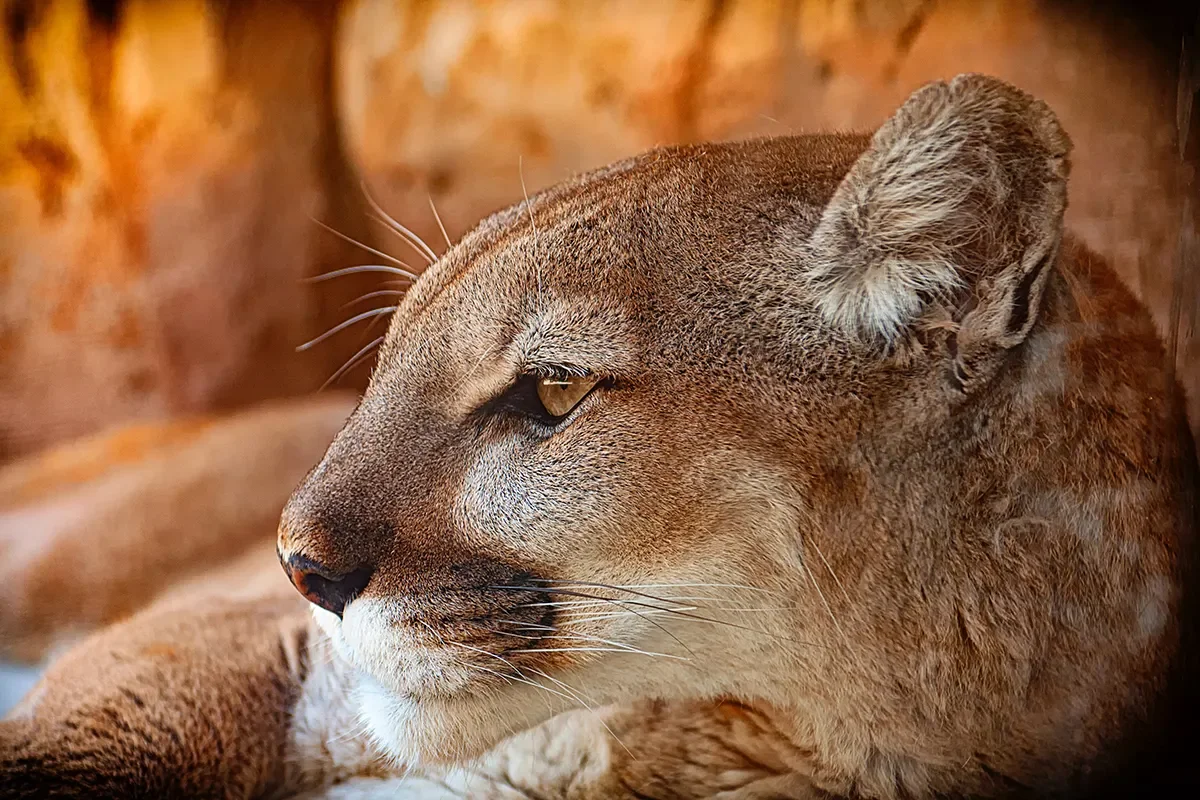
Fortunately, there are plenty of ways to prevent an encounter with a mountain lion and to protect yourself if one pounces at you. Start by keeping children close when hiking in cougar country and keeping dogs on a short leash, so neither you nor your pets or children startle a cougar just around the bend.
Next, if you see one, don’t panic. Make yourself look big by opening your coat or raising your arms. Conventional wisdom says to be loud, but animals can sense fear, Alldredge says, so if you’re yelling in a high-pitched, shaky voice, you may sound more like a dying rabbit than an actual threat.
Instead, talk confidently, even calmly, and if it doesn’t turn tail and go, start throwing things like rocks or sticks . . . or maybe even your cell phone, which would be a better use for it than taking a video. Don’t throw your backpack, though, which you can use to help protect your vitals if the animal does lunge.
Don’t run. Running signals to a mountain lion that you’re prey, so instead, back away slowly. If it still pounces, fight back using rocks, your fists, trekking poles, or anything else at your disposal.
Children and dogs are more vulnerable to a mountain lion attack due to their small size, high-pitched noises, and darting movements that resemble that of prey. Therefore, if you see a cougar, pick up your children or pet before assuming your intimidating pose. Keep them from running ahead of you on the trail and consider outfitting dogs with bear bells to scare off animals before you get there.
Unwelcome encounters with mountain lions are rare, and fatalities are even rarer. Just 17 fatal encounters with cougars have been reported in all of North America since the 1970s. And most run-ins with the animals end with no one getting hurt. However, that doesn’t mean you should let down your guard. Stay vigilant and always be prepared when hiking in mountain lion territory.


